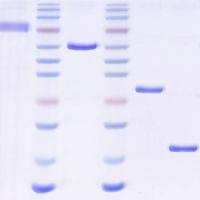Analysis of Mitosis in Squash Preparations of Larval Brains: Orcein, Giemsa, Hoechst 33258, DAPI, Quinacrine, and N-Banding
互联网
789
The cytology of mitotic chromosomes has proved to be essential for research into different aspects of Drosophila biology. Cytological approaches are routinely used to study mutations that affect chromosome behavior or structure. Moreover, cytological methods are essential for analyzing heterochromatin (see ref. 1 for review). This material is largely refractory to both genetic and molecular analyses because of the absence of recombination and because of its high content of repetitive DNA sequences. In addition, heterochromatin cannot be analyzed effectively on polytene chromosomes because it is underreplicated and included in the chromocenter. However, by applying high-resolution banding techniques (e.g., quinacrine, Hoechst, and N-banding) and fluorescence in situ hybridization (FISH) to mitotic chromosomes, one can precisely determine the breakpoints of heterochromatic rearrangements and map different types of heterochromatic DNA sequences.









